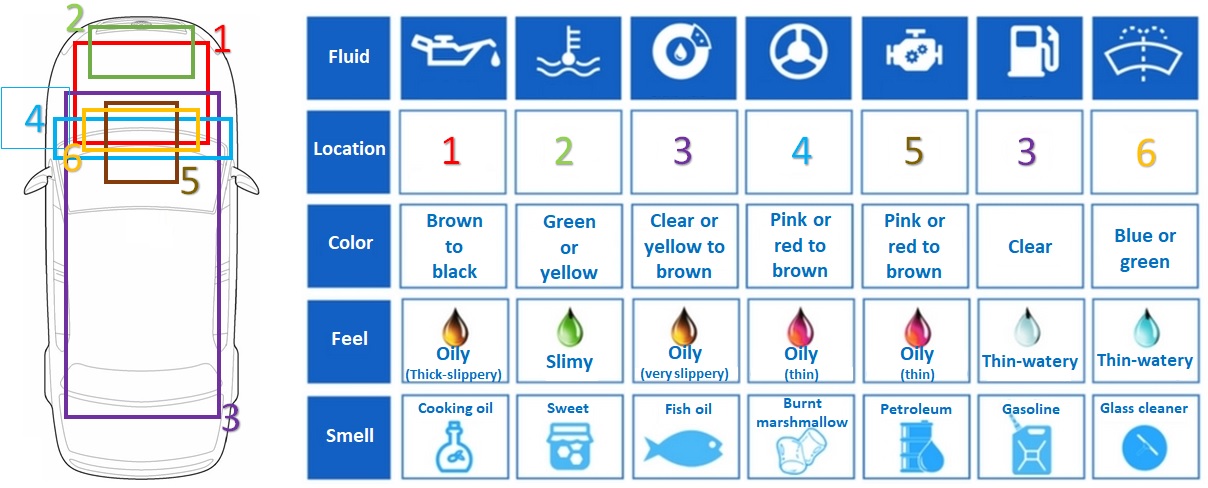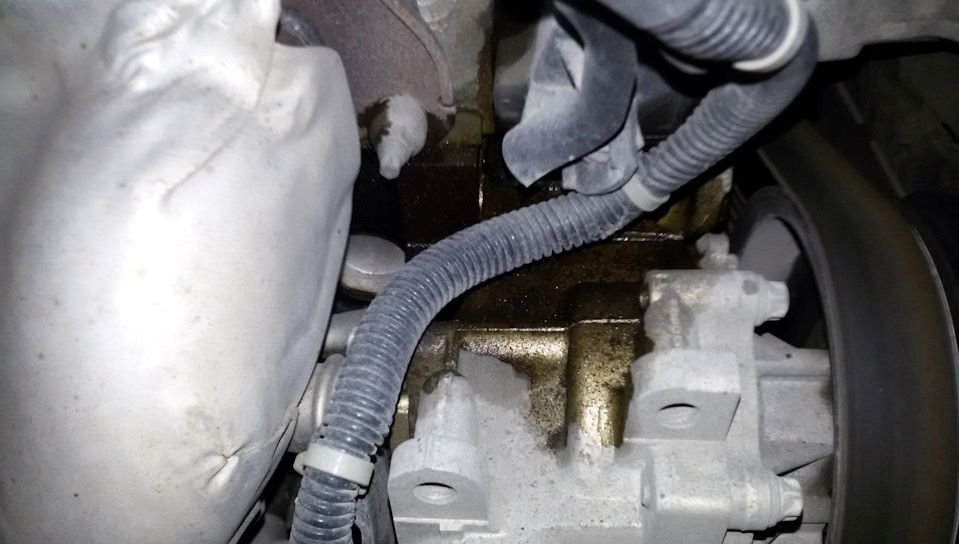Engine compartment inspection for fluid leakage
Engine compartment inspection for fluid leakage is performed during each periodic inspection or servicing. When a client complains that he has noticed fluid on the engine or under the vehicle and finds a lower fluid level, an emergency inspection is performed for fluid leakage.
The color of the liquid is the best indicator of which system is leaking. Engine and transmission oils are black, coolants are orange or green, and power steering oil is red. The smell of liquids can also indicate the type of liquid. Fuel and coolant have different odors.
Identification of fluid leaks on the vehicle
When you follow the trace of a leak, you should know that gravity causes the liquid to go down, and the radiator fan and the movement of the vehicle push the liquid in the direction of the air movement.
Often, due to dirt and inaccessibility, the place of liquid leakage cannot be detected. Then certain measures must be applied in the process of detecting leak sources. Sometimes it is necessary to wash the engine under pressure using a degreasing agent to facilitate the search.
The inspection for fluid leakage should be thorough and well planned. During visual inspection, use a strong light source and a mirror for inaccessible places. Sometimes it is necessary to remove the protective covers and heat shields from the engine. Some leaks can only be seen when the engine is running, and some only when it is not running. Precautions are required when searching for moving parts when the engine is running. For some leaks, it is necessary to use fluorescent paints. When there are small leaks, after washing the engine or applying fluorescent paint, the client must drive the vehicle for several days for the liquid to leak.
Engine compartment inspection for fluid leakage
Sometimes you can only detect a leak by inspecting under the hood, and sometimes you need to inspect under the vehicle. Therefore, the search for liquid leaks can be divided into an inspection under the hood and an inspection under the vehicle.
To inspect for a leak under the hood, follow these steps:







